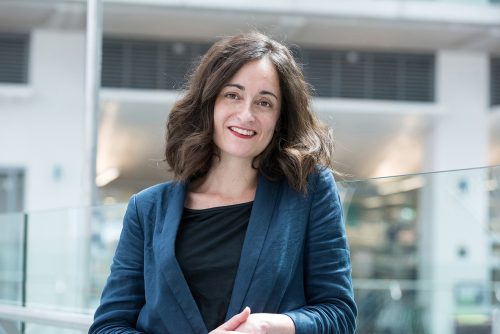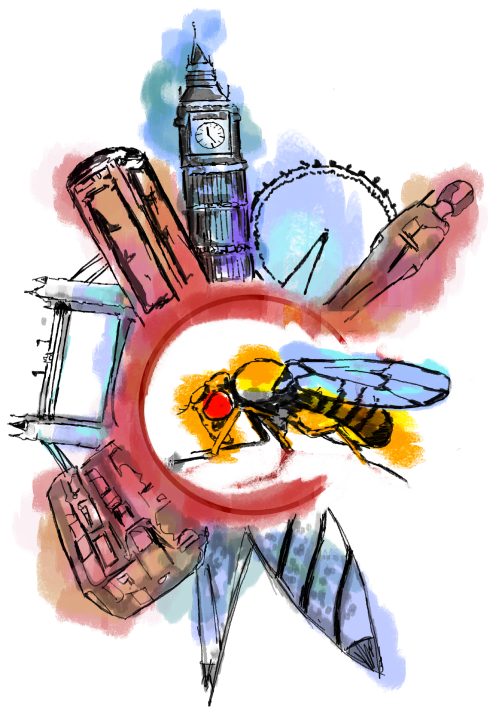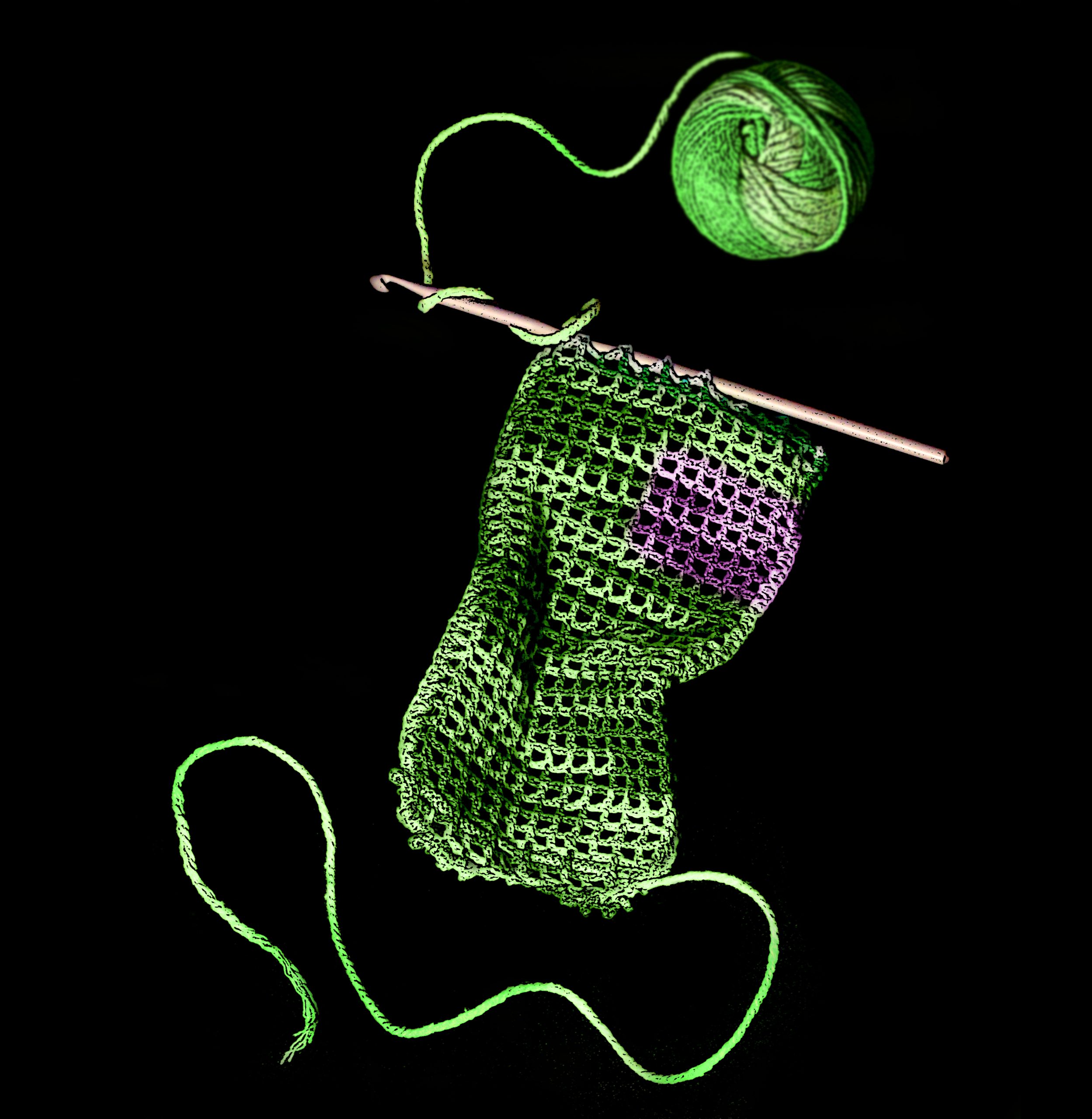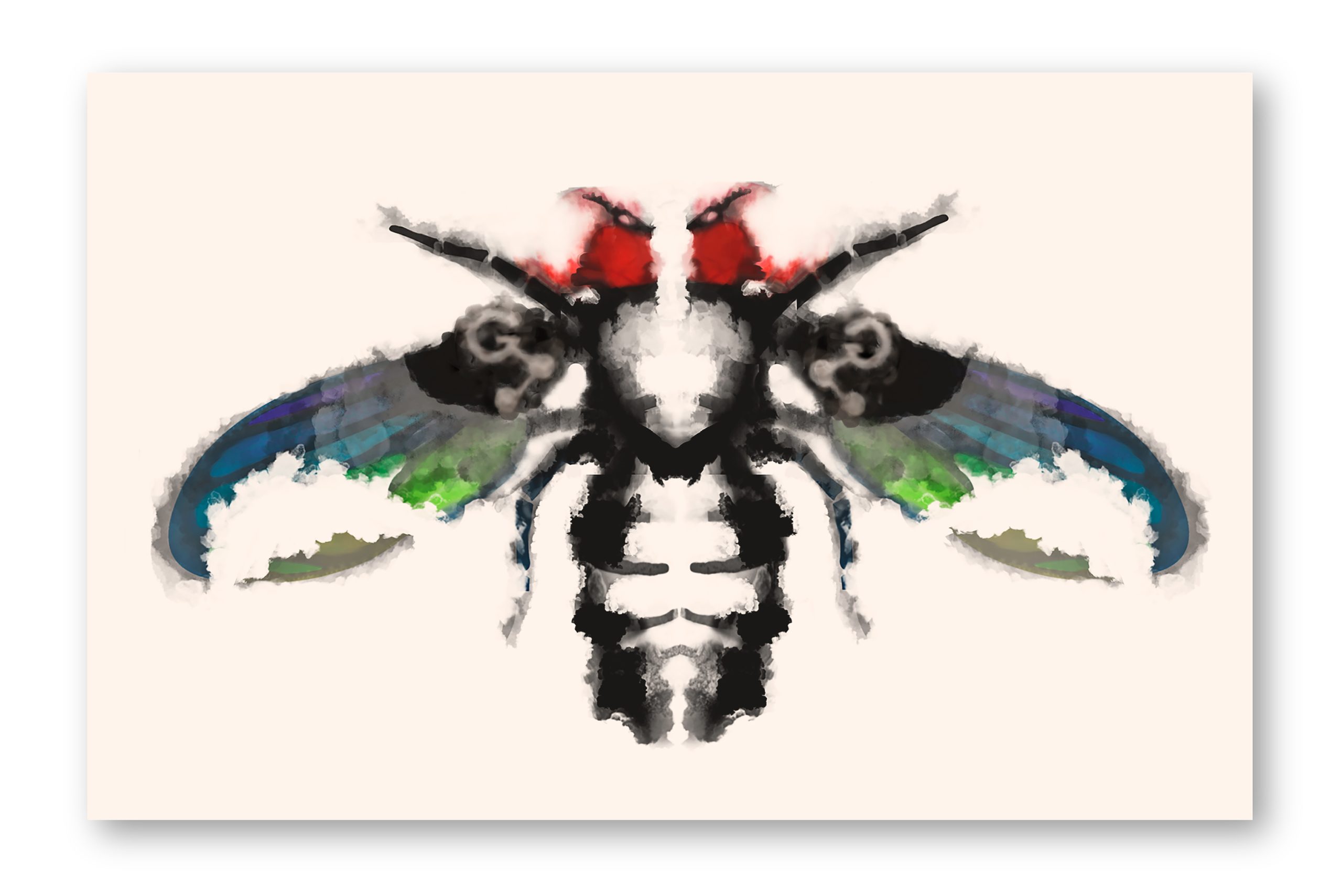SciArt profile: Maria Diaz de la Loza
Posted by the Node, on 15 November 2021
Maria Diaz de la Loza is an Andalusian researcher and scientific illustrator who has worked in genomic instability and development in both Spain and the UK. Her passion for science has been a huge artistic inspiration and has led to her illustrations and videos being used in scientific publications and events. She is currently working in London as a freelance illustrator and fly technician at King’s College London. Her work can be seen at http://be.net/MariaDiaz_delaLoza and you can follow her on Twitter at @Maria_Diaz_Loza

Where are you originally from and what do you work on now?
I am originally from Chipiona, a little town by the seaside in the South of Spain. Thanks to the support of my family, I was able to move to the capital of my region to complete my degree in Biology followed by a PhD in Genetics, studying genomic instability in yeast, at the University of Seville. I was ready for a change for my first postdoctoral position, and I moved to a new field to work on development in the fruit fly, in the Andalusian Centre for Developmental Biology. That was a life changing decision. The fly community is remarkably creative, and it truly inspired me to further apply my artistic side to science. For my second and last postdoc, I moved to London, to the new Francis Crick Institute, where I continued working in development. These years as a scientist put me in contact with many different (and amazing) people, mentors and experiences, and they inspired me to pursue a career that combined my two sides: art and science. Now, I work as a freelance illustrator, collaborating with other scientists around the world to illustrate their work. I find it extremely satisfying. I did not want to completely leave academia, and I am lucky to maintain a direct contact with the research community by working as a fly technician at King’s College London, where my supervisor is delighted with my illustrator side and gives me the flexibility that I need to balance my two jobs.

Were you always going to be a scientist?
I always wanted to be a biologist (although, at nine years old, I also fancied the idea of being a vet or a hairdresser). Being in close contact with the sea all my life, I thought I would specialise in marine biology. However, after taking my first genetics class I was totally fascinated, and I started to take all the genetics subjects I could. It was after getting in closer contact with that community that I considered the possibility of starting a PhD, and I was lucky they gave me that opportunity in the Department of Genetics of the University of Seville. Even though I started my PhD without a clear idea of how an academic career works, I found that I liked the environment a lot and I have enjoyed many aspects of it since. Being a scientist is not only about science, it allows you to meet all kind of people, to see the world and to grow as a person, and of course you gain an incredible number of new skills, so I will say it is a path worth taking.

And what about art – have you always enjoyed it?
Absolutely! I have been creating and drawing since I was a little. My mother was an avid reader who liked to copy illustrations from her favourite books, and she always encouraged me to do both. I continued drawing through school as a way to learn and embellish my homework, and I started to learn what I could about visual arts by myself. I even had a moment of doubt, just before starting University, when I played with the idea of enrolling into an Art Bachelor. In the end, biology won – I wanted to do that my entire life – but I never stopped painting and drawing. During my PhD, it was a pleasant surprise to discover how both science and art complement each other. Science is more easily understood with the help of an image, and illustrations are not only useful for communicating your work to others, but also an excellent tool to improve our insight into the process you are studying. I can say that through science, I continued learning and developing my artistic skills.
“During my PhD, it was a pleasant surprise to discover how both science and art complement each other.”

What or who are your most important artistic influences?
Absolutely everything! I get obsessed with anything that catches my eye and learn from it. Sometimes it is about visual arts, mostly classic and modern painters, or some visually attractive movies. Another major influence is nature itself and certain urban landscapes; I am completely fascinated with the amazingly eclectic London architecture since I moved here. I usually take photographs that I can use for future projects, and I often navigate through them to come up with ideas. Same goes for science, as a developmental biologist I have always worked with microscopy images, and I learn a lot from other people’s work. But inspiration can be found everywhere, sometimes I spend hours watching crafts, makeup, or tattoo videos, and very often I have used everyday objects to come up with a design. I think you can pick up ideas from enjoying any kind of artistic manifestation, which later, can offer you exactly what you need to make a design.

How do you make your art?
As a freelance illustrator, what really fulfil me is the process of illustrating someone else’s work and making it beautiful and precise. The process usually starts by having a chat with the authors to understand their work and the general idea of what they want (which is made easier by my scientific background). Then I start to think about alternative options. At some point, there it is the perfect one. The drawing starts then. First, I prepare some pen and paper sketches, to show my concept to the client, and once we have decided the major points, I move to digital platforms. One of the great aspects of working with other scientists is that they are used to being very clear and concise in what they want. This means my preliminary ideas are usually well received, and the first feedback from the authors helps improved them substantially. The process continues with some back and forth with the authors, to be sure that I am showing exactly what they want. The final product usually consists of digital diagrams and illustrations for publications, journal covers or events, but I also like to combine them with different media. One of my favourite techniques is to take real photographs of everyday objects and combine them to illustrate a biological process as an analogy. Recently I have had some fun working with several labs to create video abstracts, and I am eager to explore more in that direction.

Does your art influence your science at all, or are they separate worlds?
I think that what inspires me the most to create art, is to apply it to something practical. When I started in academia, art and science started to evolve together and now my artistic side is almost completely focussed on science. I chose to study development because it is strongly based on imaging (I was jealous of their microscopy images!), and I used my artistic side to improve the way I acquire and show my results. Also, I think designing diagrams was a deal-breaker for me. I started to create my own diagrams early on during my PhD, primarily to try to understand what I was doing, but also to help to explain my work to others, and with time I started to do the same for my colleagues. Now I barely attend any kind of talk without drawing their ideas on my notebook. Working with scientific images also helped me to better understand photography, specially of very tiny things, and my connection with other laboratories is very helpful to get specific material for my illustrations. The last step was to officially combine them both, and I am extremely grateful that I have been able to do this during the last two years.

What are you thinking of working on next?
I always wonder how it would be to work in illustration full-time; for a journal or a company. Being a freelancer allows you to interact with people around the world and learn about many different projects, which is exciting and it is something that I will miss for sure. However, I have learnt a lot from other illustrators during my freelance stage, and I think working in a department dedicated to science illustration could improve my training further. For now, I am thrilled of working in different projects as a freelancer, but who knows what the future has in store for me!

Thanks to Maria and all the other SciArtists we have featured so far. We’re looking for new people to feature in this series – whatever kind of art you do, from sculpture to embroidery to music to drawing, if you want to share it with the community just email thenode@biologists.com (nominations are also welcome!)


 (9 votes)
(9 votes)
We need artists with imagination like Maria Diaz de la Loza in science…👏